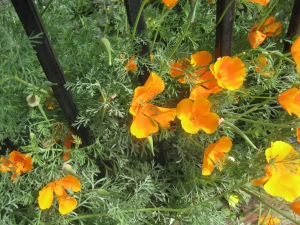In the spirit of the wave against a throwaway culture and also of Konmari methods, I decided to use whatever I had in the house to make a homemade shampoo. This also meant that I did not buy the spice/coffee grinder that I was going to get from Amazon. After having browsed the website for days, and even got a free gift card, so I wouldn’t have had to pay anyway. I also looked into buying a manual grinder. But I was conscious that I would buying something that needed manufacturing, transporting and packaging, not to mention maintenance and cleaning. Some of the reviews were good and a few were bad but these days, one cannot trust online reviews either as many have turned out to be fake. Thirdly, using the heavy mortar and pestle is actually good for my joints as I have osteoporosis. I’ve been recommended weight bearing exercises and this appears to be a two things for one!
So this morning, I dug out an old mortar and pestle that had been found lurking in our old house and I had cleaned it some time back- I wrote about how to remove rust then. Then I found several things in my cupboard which I have substituted for the original recipe as some of the ingredients cannot be found in the a ‘Western’ country easily. Here is my recipe for a homemade shampoo, suitable for dark hair. But if you used dried hops or camomile, you can use this for blonde or lighter hair. These are traditional herbs that have been used for thousands of years, so they are tried and tested on humans. However, I am not a herbalist and I suggest you try a small portion on your skin before you put this on your scalp.
Ingredients:
- Four tablespoons of reetha powder ( I used my old heavy mortar and pestle to pound up this powder from dried reetha fruits I already had, after removing the black podlike seed inside)
- One tablespoon fenugreek seeds
- One tablespoon chickpea flour (substituted for green gram flour in the original recipe)
- One tablespoon dried Tulsi powder (already had but now easily available in Western stores)
- One tablespoon dried rosemary (substituted for dried curry leaves)- this is good for dark hair
One teaspoon dried amla lying in the house (again pounded up using the mortar and pestle) but you can omit if you can’t find it. This is what it looks like when ground up together. Don’t worry too much if you don’t seem to have a fine powder- it still works because you need to soak it in water for at least two hours before use.
This is what it looks like when ground up together. Don’t worry too much if you don’t seem to have a fine powder- it still works because you need to soak it in water for at least two hours before use.
One it has been soaked in a small amount of water, you can see the soapy liquid forming. Use a bit of rosewater for this if you have any- I used Nealsyard rosewater but ordinary water will do fine as well. Best of all it smells very sweet, can’t really describe it but so much better than any shampoo I’ve used so far, even if they claim to be organic and natural.

Before use, massage your head with some coconut oil, said to encourage hair growth. Leave it for about 20 minutes and then apply this paste to the head and wash off. It is such a lovely Sunday treat! Best of all, it was free to make with what I had in the kitchen.










































